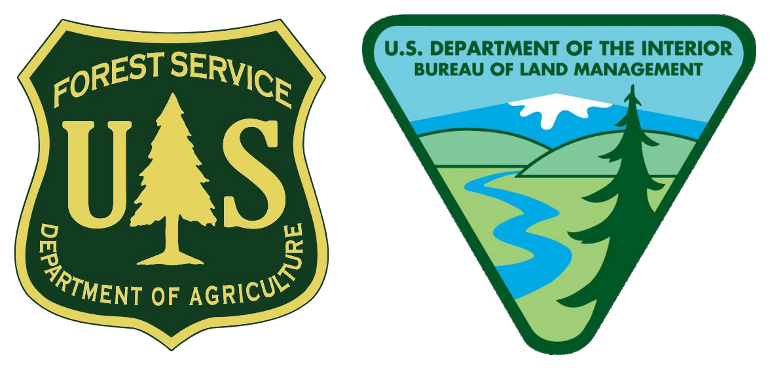Hawaii - U.S. Forest Service (USFS) & Bureau of Land Management (BLM)
These two agencies control vast amounts of land in the United States. Between the U.S. Forest Service (USFS) and the Bureau of Land Management (BLM), they administer almost 19% of the land in the U.S. That's almost one out of every five acres! It just so happens that none of it is in Hawaii. However, these organizations are significant enough to warrant a page for discussion. The majority of national forests, and nearly all BLM lands, are in the western half of the country, including Alaska. These areas are typically much less developed than national parks but there are plenty of opportunities for experiencing life on them.
Hawaii has at least its share of forests but none of them are run by the U.S. Forest Service. We'll discuss who runs Hawaii's forests in a few pages. But there are lots of forests on the mainland that are run by the USFS. The USFS is a subdivision of the Department of Agriculture (USDA). According to their web site, the USFS "protects 154 national forests and 20 grasslands in 43 states and Puerto Rico. The agency’s mission is to sustain the health, diversity, and productivity of the nation’s forests and grasslands to meet the needs of present and future generations."
The BLM, like the National Park Service and the Fish & Wildlife Service, is a subdivision of the Department of the Interior. As the names of the parent departments suggest, the Forest Service is concerned with agriculture and the BLM is not. The mission of the BLM, according to their web site, is "to sustain the health, diversity, and productivity of America’s public lands for the multiple use and enjoyment of present and future generations." That might be starting to sound familiar. All the agencies we've discussed so far have similar missions. The difference is in what the land is like.
BLM lands can be summed-up as having lower-quality vegetation (agriculturally speaking), lower-quality recreation opportunities (popularly speaking) and less need for conservation of habitat. If the land had higher-quality vegetation for agriculture (trees mostly), it would likely be a part of the Forest Service. If it had more of a need for conservation of wildlife habitat, it might be a wildlife refuge. And if it had higher-quality recreation opportunities, it might be a national park. The thing is that the "quality" of a given piece of land is relative, and there are beautiful and interesting parts of the BLM system.
|


